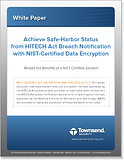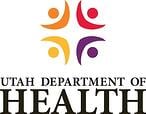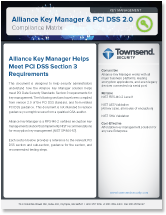 I am on a new kick to share some security resources with you that I’ve found valuable over the years. I am not following any particular order or ranking people and resources by importance: I’m just going to do this as the mood strikes me.
I am on a new kick to share some security resources with you that I’ve found valuable over the years. I am not following any particular order or ranking people and resources by importance: I’m just going to do this as the mood strikes me.
Let me introduce you to Chris Evans and his blog.
Chris works for Google, he’s a software and security geek, and is an independent sort. A lot of his work is technically deep, which is great for those of us who enjoy that sort of thing. But I also really like his world view.
Chris has a hacker’s mentality (in the good sense) and his values are lined up with making the world a better and safer place. He doesn’t avoid talking about his own mistakes, and believes that more information about security problems makes the world safer as it gives people the information they need to protect themselves, and it helps developers make their solutions better. He also provides a lot of just plain good advice that anyone can use.
One example is a recent blog on web browser security. The blog combines some technical information, but it also gives you information about how to think about web browser security, and why some web browsers are better than others.
He also makes an interesting statement about browser security that I think has corollaries that apply to anyone writing software that needs to be safe. Chris says:
“The security of a given browser is dominated by how much effort it puts into other peoples' problems.”
For those of us who write business applications and security software, I would put it this way:
"In addition to everything else you do to make your solution more secure, you have to include other people’s problems in the scope of your thinking, including the unexpected ways they might use your solution."
Enjoy.
Patrick





 Really successful technology partnerships are hard to achieve and therefore are rare. There are so many potential pitfalls in this type of partnership that include conflicting goals, changing market conditions, and on and on. That’s why I am particularly pleased with our partnership with Symantec on the IBM Enterprise platform versions of PGP encryption. This technology partnership now spans more than a decade and several mergers and acquisitions. The level of trust and integration between Townsend Security and Symantec has just gotten better over time, and our IBM i (AS/400, iSeries) customers and IBM System z Mainframe customers have benefited.
Really successful technology partnerships are hard to achieve and therefore are rare. There are so many potential pitfalls in this type of partnership that include conflicting goals, changing market conditions, and on and on. That’s why I am particularly pleased with our partnership with Symantec on the IBM Enterprise platform versions of PGP encryption. This technology partnership now spans more than a decade and several mergers and acquisitions. The level of trust and integration between Townsend Security and Symantec has just gotten better over time, and our IBM i (AS/400, iSeries) customers and IBM System z Mainframe customers have benefited. IBM System z customers will be glad to know that we’ve partnered with
IBM System z customers will be glad to know that we’ve partnered with  Hundreds of thousands of Medicaid recipients are up in arms about a recent security breach that saw their personal information abducted by hackers. Originally it was reported that 181,000 had their information stolen including 25,000 who actually had their social security numbers taken as well. Currently the report has been updated to a staggering 900,000 and 280,000 respectively. Over a quarter million people on Medicaid had their social security numbers exposed, and many of these victims don’t have the means to hire private investigators or attorneys to right their personal situations.
Hundreds of thousands of Medicaid recipients are up in arms about a recent security breach that saw their personal information abducted by hackers. Originally it was reported that 181,000 had their information stolen including 25,000 who actually had their social security numbers taken as well. Currently the report has been updated to a staggering 900,000 and 280,000 respectively. Over a quarter million people on Medicaid had their social security numbers exposed, and many of these victims don’t have the means to hire private investigators or attorneys to right their personal situations. 
 Whenever I am asked what Townsend Security does I have to explain that we aren't in the business of deploying security cameras or contracting out shopping mall guards. We are actually a software security vendor for the IBM i (AS/400) platform. It's usually at this point the recipient's eyes glaze over and I am left simply stating that I am in the 'computers' field. On occasion however I will be chatting with a colleague who also works in the tech industry who will scoff when they hear the name AS/400, iSeries, Systemi (take your pick). Often I'll hear, "Whoa, that's legacy technology. You have customers still using that platform?"
Whenever I am asked what Townsend Security does I have to explain that we aren't in the business of deploying security cameras or contracting out shopping mall guards. We are actually a software security vendor for the IBM i (AS/400) platform. It's usually at this point the recipient's eyes glaze over and I am left simply stating that I am in the 'computers' field. On occasion however I will be chatting with a colleague who also works in the tech industry who will scoff when they hear the name AS/400, iSeries, Systemi (take your pick). Often I'll hear, "Whoa, that's legacy technology. You have customers still using that platform?"

 Former Mayor Daley’s goal of having a camera on every street corner in Chicago is slowly becoming a reality. The idea behind cameras at intersections is to create additional revenue and increase safety. The cameras take a quick snapshot of your car if you decide to make your trip quicker by zooming through a red light. Current Mayor Emanuel has continued the initiative by blanketing close to half the city with cameras to catch prospective speedsters. With the extra cameras, the Chicago police department is now able to track an automobile by taking a picture of the license plate and following it throughout the city. If proper data encryption practices are not implemented, this could result in a dangerous violation of the average person’s right to privacy.
Former Mayor Daley’s goal of having a camera on every street corner in Chicago is slowly becoming a reality. The idea behind cameras at intersections is to create additional revenue and increase safety. The cameras take a quick snapshot of your car if you decide to make your trip quicker by zooming through a red light. Current Mayor Emanuel has continued the initiative by blanketing close to half the city with cameras to catch prospective speedsters. With the extra cameras, the Chicago police department is now able to track an automobile by taking a picture of the license plate and following it throughout the city. If proper data encryption practices are not implemented, this could result in a dangerous violation of the average person’s right to privacy.